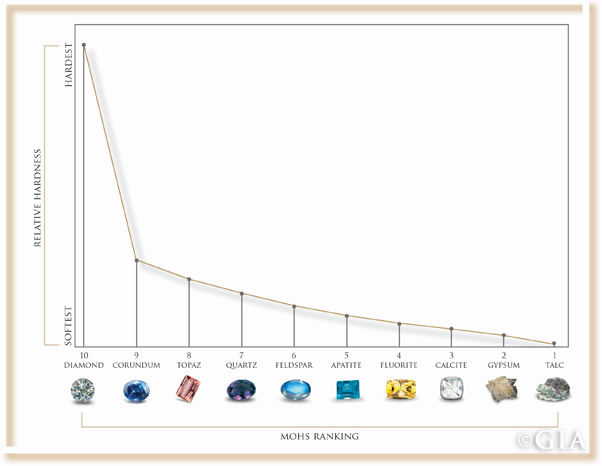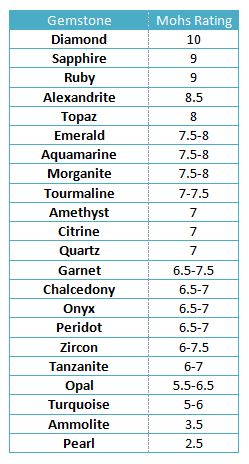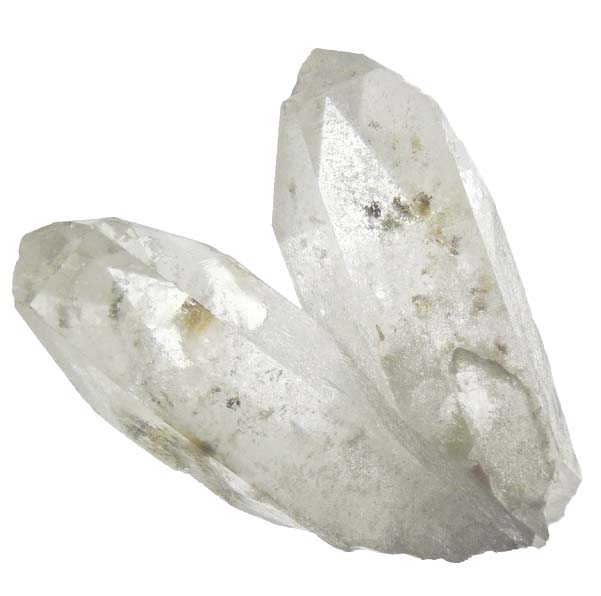What is the Mohs Scale?
Posted on Wednesday, July 3rd, 2019
in Informational.
Simply put, the Mohs scale rates the hardness of gemstones and minerals. A gemstone’s hardness rating indicates which gemstones are more prone to scratches and which ones are relatively scratch resistant. Gemstones that are high on the Mohs scale are less likely to acquire scratches while those lower on the scale are more scratch prone. This helps us better determine which gems are suitable for everyday wear and which ones require additional care when worn.
The Mohs scale was first introduced in 1822 when German geologist Friedrich Mohs ranked ten minerals based on their hardness. Number ten indicated the hardest gemstone and number one represented the softest gemstone. This ranking is still used to this day.
So what is the hardest gemstone found in the world? Diamonds, of course! With a rating of ten on the Mohs scale, diamonds can only be scratched by other diamonds. The next hardest mineral is corundum, which is the mineral family that sapphires and rubies belong to. But it’s important to note that even though rubies and sapphires are ranked at nine on the Mohs scale, they’re not even close to being as scratch resistant as diamonds. In fact, they’re about four times less scratch resistant than diamonds. The Mohs scale is an ordinal scale, which means that the gemstones are ranked by their hardness order with no degree of variation established between each value. So while diamonds (10) and sapphires (9) vary greatly in their hardness, topaz (8) and quartz (7) are more closely related when it comes to hardness. The graph below will give you a better idea of the relative hardness of various gemstones. As you can see, nothing really compares to a diamond’s hardness.

Here are the hardness ratings of some of the most popular gemstones found in fine jewelry.

Generally, gemstones with a Mohs rating of seven or higher are suitable to be worn in everyday jewelry pieces (with those closer to seven requiring more care than diamonds, sapphires, or rubies). However, it’s important to note that hardness is only one factor that affects a gemstone’s durability. A gem’s toughness and stability should also be taken into account when considering which gemstones would be most suitable given your lifestyle.
The toughness of a gem refers to how well that gemstone can survive an impact and resist cracking or chipping. If you’re considering a gem that is low on the toughness scale and are worried about potential breakage, make sure it’s cut well, doesn’t have any sharp points, and is well protected in its setting.
A gemstone’s stability refers to its resistance to chemicals, heat, humidity, and light. Extreme temperature changes have been known to damage certain gemstones like opals and tanzanite. And gemstones like citrine, topaz, and amethyst can change color or fade when exposed to heat or light for a long period of time. Some chemicals, like chlorine and ammonia, have also been known to cause damage in less-stable gemstones, like turquoise and pearl.
So before you decide on purchasing a gemstone that you plan to wear every day, make sure it’s high on the Mohs scale, can resist harsh impacts, and won’t be affected by chemicals, heat, humidity, or light.
If you have any questions about whether or not a certain gemstone will be suitable given your lifestyle, contact Kloiber Jewelers and we’d be happy to give you some expert advice.




